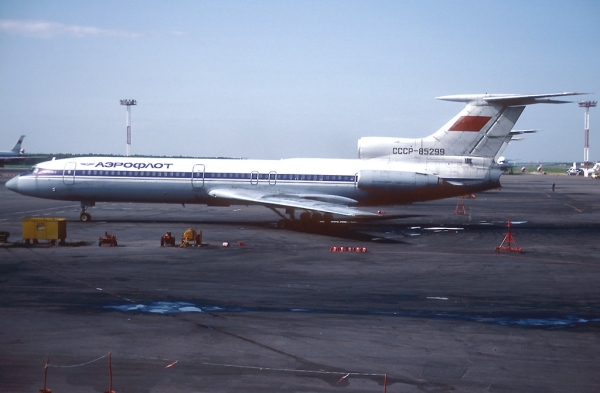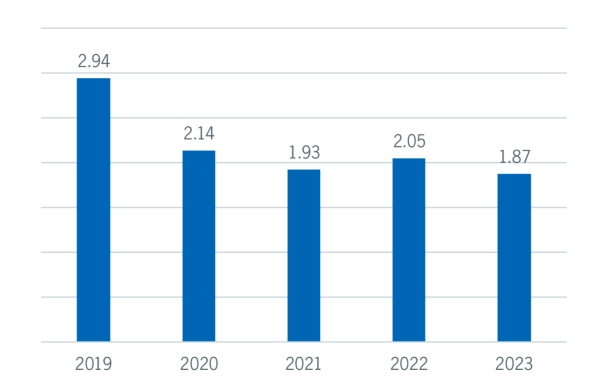A passenger plane flying from Baku to Grozny crashed near the city of Aktau, Kazakhstan on December 25, 2024. The aircraft, after issuing a distress signal over the Caspian Sea, diverted to Kazakhstan in an attempt to make an emergency landing. The plane failed to reach safety, and the crash resulted in several fatalities and injuries. The incident is currently under investigation by aviation authorities, and more details are expected in the coming days.
This crash adds to the history of air accidents in Kazakhstan, where air safety has seen improvements, but the country has still experienced its share of tragic events. While air travel in Kazakhstan is relatively safe, the recent crash highlights the risks associated with aviation, especially during emergency situations.

Air Crash Statistics
In 2023, Kazakhstan witnessed another military aircraft crash, involving a plane from the National Security Committee. Six people were on board, and tragically, four individuals lost their lives. The other two crashes that year did not involve passenger flights and fortunately did not result in fatalities. These incidents, though not directly linked to passenger aviation, raised concerns about the safety of military and non-commercial aircraft in the region.
In 2022, the last major air crash in Kazakhstan occurred when a medical flight plane caught fire in February. The aircraft, which was carrying two crew members and one doctor, successfully landed without any casualties. The crew’s swift response to the emergency prevented further damage, and there were no fatalities.
One of the most notable accidents occurred in 1980, when Aeroflot Flight 4225, a Tupolev Tu-154, crashed shortly after takeoff from Alma-Ata (now Almaty). The crash, which killed 166 people, remains the deadliest air disaster in the country. The crash was attributed to severe downdrafts and weather conditions that led to a stall.

On August 11, 1984, Aeroflot Flight 5463, an Ilyushin Il-62, crashed near Almaty, resulting in the deaths of 90 people. The cause of the crash was determined to be pilot error during the descent, compounded by poor visibility and misjudgment.
Another event occurred on November 12, 1996, when a Kazakhstan Airlines Ilyushin Il-76 collided mid-air with a Saudi Arabian Airlines Boeing 747 near New Delhi, India, killing 349 people. This remains one of the deadliest aviation disasters involving Kazakhstan, caused by miscommunication and altitude deviations by the Kazakhstan Airlines crew.
Kazakhstan’s aviation record also includes incidents closer to home. In December 27, 2019, Bek Air Flight 2100, a Fokker 100, crashed near Almaty, killing 12 people. The crash was caused by ice buildup on the wings, which led to a loss of lift shortly after takeoff. An investigation revealed maintenance violations and inadequate pre-flight inspections.
Similarly, on January 29, 2013, SCAT Airlines Flight 760, a Bombardier CRJ200, crashed near Almaty, killing 21 people. The crash was attributed to a steep descent caused by an elevator deflection, with poor weather conditions contributing to the incident.
Another accident occurred on July 7, 2000, when a Kazakhstan Airlines Boeing 737-200 crashed near Atyrau, killing 25 people. The cause was traced to engine failure due to mechanical issues during the descent.
Aeroflot Flight 862, which crashed on August 14, 1979 near Almaty, remains one of Kazakhstan’s deadliest crashes. A Tupolev Tu-154 aircraft, the crash killed 170 people due to a combination of engine failure and poor weather conditions.
Similarly, Kazakhstan Airlines Flight 603 crashed on July 29, 1997, near Shymkent, resulting in the deaths of all four crew members. The crash was caused by a mechanical malfunction and pilot error during the landing approach.
Another major crash occurred on December 29, 1999, when Air Kazakhstan Flight 821, a Boeing 737-200, crashed near Atyrau, killing 33 people. The cause of this crash was attributed to the crew’s failure to follow standard operating procedures, combined with technical issues with the aircraft’s engines.
Additionally, on October 25, 2010, a Turkmenistan Airlines Flight 72, a Boeing 737-800, lost control over Kazakhstan while en route to Turkmenistan, leading to the deaths of 31 people. The mechanical failure during the flight contributed to the crash.
Between 1941 and 2022, Kazakhstan experienced 89 air crashes involving passenger, military, and agricultural aircraft, with 804 fatalities as per zakon.kz. This averages out to about one crash per year, with at least one fatality recorded in 50 of the 89 incidents. Aircraft like the Tu-134, Tu-104, and Tu-154 were involved in fatal accidents and accounted for 43% of the fatalities in Kazakhstan’s aviation history.
The Antonov An-2R, an agricultural aircraft, holds the record for the most frequent crashes in Kazakhstan. The aircraft was involved in 18 crashes, resulting in 26 fatalities. Despite the high frequency of incidents, many of these crashes did not result in deaths, highlighting the widespread use of these planes for agricultural and cargo purposes.
When compared to its larger neighbor, Russia, Kazakhstan’s air crash statistics remain relatively safer. Russia has recorded 1,395 air crashes from 1941 to 2022, which is 16 times higher than Kazakhstan, with 9,432 fatalities.

Global Aviation Trends
According to the International Civil Aviation Organization (ICAO), the global accident rate trend per million departures over the past five years shows a decline, with 2023 recording an accident rate of 1.87 accidents per million departures. This marked a 17.9% decrease compared to the previous year, representing the lowest accident rate in the past five years.
Between 2019 and 2023, the annual number of accidents showed a downward trend. The highest number of accidents during this period occurred in 2019, with 114 incidents. However, the number of accidents saw a significant decline in 2020 and 2021, a trend largely attributed to reduced passenger and flight traffic due to government measures aimed at controlling the spread of COVID-19. As restrictions were lifted in 2022, air transport began to recover.
In 2023, while passenger and flight traffic continued to rise, the number of accidents only saw a slight increase, and fatal accidents notably decreased. According to data, the number of fatalities linked to these fatal accidents dropped from 160 in 2022 to 72 in 2023, marking the lowest fatality count in the past five years.




